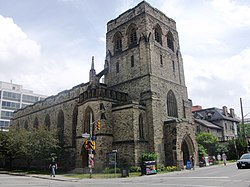
Dominion Chalmers United Church is a large United church, located in downtown Ottawa, at the corner of Cooper and O'Connor Streets. It is a 1962 merger of two key congregations from both the Methodist and Presbyterian traditions, each possessing lengthy histories.
Reverend Major James Craig Tolmie was a Canadian politician, presbyterian clergyman, military chaplain and soldier.

St. Andrew's Presbyterian Church is the oldest Presbyterian church in Ottawa, Ontario, Canada.

The Presbyterian Church in Canada is a Presbyterian denomination, serving in Canada under this name since 1875. The United Church of Canada claimed the right to the name from 1925 to 1939. According to the Canada 2001 Census 409,830 Canadians identify themselves as Presbyterian, that is, 1.4 percent of the population.

Knox College is a postgraduate theological college of the University of Toronto in Toronto, Ontario, Canada. It was founded in 1844 as part of a schism movement in the Church of Scotland following the Disruption of 1843. Knox is affiliated with the Presbyterian Church in Canada and confers doctoral degrees as a member school of the Toronto School of Theology.
Walter George Brown was a Presbyterian Church in Canada minister who opposed the formation of the United Church of Canada and was a United Reform Movement MP in the House of Commons of Canada.

St. Andrew's Church is a historic Presbyterian church located at the corner of King Street West and Simcoe Street in the city's downtown core of Toronto, Ontario, Canada. It was designed by William George Storm in the Romanesque Revival style and completed in 1876.

Knox Presbyterian Church is a Presbyterian church in downtown Toronto, Ontario, Canada.

St. Andrew's Presbyterian Church is a Presbyterian church congregation located in Quebec City, Quebec, Canada. It belongs to the Presbyterian Church in Canada denomination.
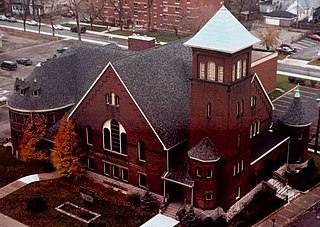
St. Andrew's Presbyterian Church, is a Presbyterian Church in Canada congregation in downtown Windsor, Ontario, Canada. The congregation dates back to 1857, and at one time, was the largest congregation by membership within the Presbyterian Church in Canada (PCC).

Knox Presbyterian Church, Oakville is a Presbyterian Church in Canada congregation, and located at 89 Dunn Street at Lakeshore Road in downtown Oakville, Ontario, Canada.

Elgin Street is a street in the Downtown core of Ottawa, Ontario, Canada. Originally named Biddy's Lane, it was later named after Lord Elgin.
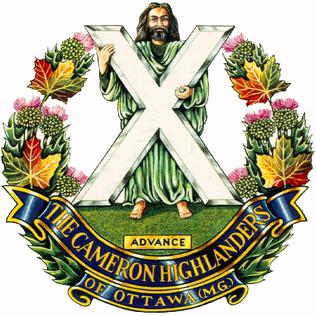
The Cameron Highlanders of Ottawa is a Canadian Army Primary Reserve infantry regiment.

Dundee Parish Church is located in the east section of Dundee's "City Churches", the other being occupied by the Steeple Church. Both are congregations in the Church of Scotland, although with differing styles of worship.
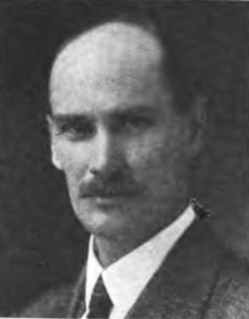
John Albert Ewart was a Canadian architect and son of Chief Dominion Architect David Ewart.

The 207th (Carleton) Battalion, CEF was a battalion of the First World War Canadian Expeditionary Force.

The Central Experimental Farm (CEF), commonly known as the Experimental Farm, is an agricultural facility, working farm, and research centre of the Science and Technology Branch, formerly the Research Branch, of Agriculture and Agri-Food Canada. As the name indicates, this farm is centrally located in and now surrounded by the City of Ottawa, Ontario, Canada. The 4 square kilometres (1.5 sq mi) farm is a National Historic Site of Canada and most buildings are protected and preserved as heritage buildings.
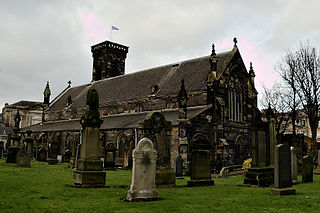
South Leith Parish Church, originally the Kirk of Our Lady, St Mary, is a congregation of the Church of Scotland. It is the principal church and congregation in Leith, in Edinburgh. Its kirkyard is the burial place for John Home and John Pew, the man from whom the author Robert Louis Stevenson reputedly derived the character of Blind Pew in the novel Treasure Island. The church has been repaired, used as a magazine and reconstructed but still looks similar to its appearance on a 1608 seal.

Knox Presbyterian Church is located at 4156 Sheppard Avenue East in the Agincourt neighbourhood of Toronto, Ontario, Canada.
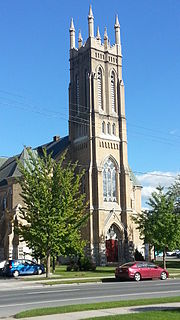
Emmanuel United Church is a church located in the downtown core of Peterborough, Ontario, Canada. Originally Methodist, since 1925 it has belonged to the United Church of Canada. The church was built between 1873 and 1875 and was designed by Henry Langley in the Gothic Revival style. It is designated under Part IV of the Ontario Heritage Act by the City of Peterborough Bylaw 1990-204.
